East End House – Perched on a bluff overlooking the water, this house on Long Island’s East End is a serene year-round retreat. Living spaces open outward toward the landscape, catching cool breezes and lapping waves in summer, and in winter orient inwards toward a cozy two-sided fireplace and warm wood paneling. Broad cantilevered overhangs create dramatic external rooms while providing additional shade from the summer sun. The house settles into its natural environment, prioritizing new and old growth trees, outdoor living spaces, and views while using its low profile to minimize its presence on the site.
Architizer chatted with Andrew Franz, Founder at Andrew Franz Architect PLLC to learn more about this project.
Architizer: What inspired the initial concept for your design?
The house was designed to provide perpetual connections to its unique site and an ever-changing natural landscape. The orientation of each and every space, interior and exterior, to the surrounding vegetation, water, and sun largely drove the house’s siting and floorplan.
Making the house flexible enough to be used differently during different seasons, or even at different times of day, was also important. Doors and windows open wide in spring and summer to bring in fresh air and the sound of the water, while a double-sided wood-burning fireplace allows a warm fire to be enjoyed from either the dining room or living room in winter or on cool nights. The house’s owners also sought a home that would be exceptionally comfortable and long-lasting with minimal presence on its delicate site.

© Albert Vecerka/Esto

© Albert Vecerka/Esto
What do you believe is the most unique or ‘standout’ component of the project?
We are proud of how the house engages with and settles into its natural environment without drawing attention to itself. The building opens up through a breezeway, multiple covered porches, brise soleil, and glazing to allow both air and views to travel through it, constantly reminding inhabitants that they should be spending time outdoors. The boldest gesture is a cantilevered porch and living space supported by a large concrete pier and board formed retaining walls, gently revealed only from the back.
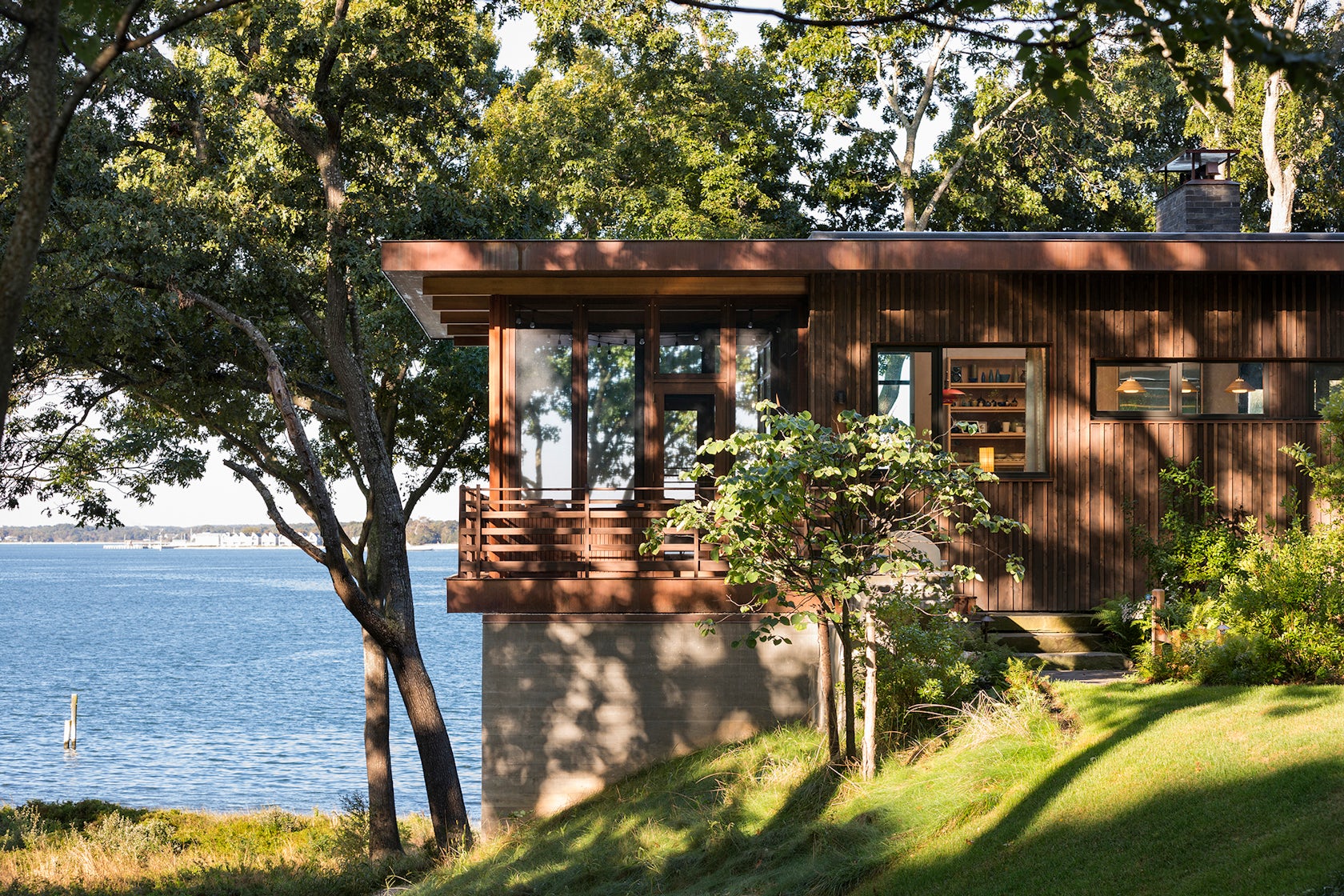
© Albert Vecerka/Esto
What was the greatest design challenge you faced during the project, and how did you navigate it?
The design challenge was twofold. While one of the best things about the house is its island location, the charm of living on an island comes with a slower pace and logistical challenges. Everything had to be imported on a ferry and makes construction harder. Another challenge was fitting a dense program of a master suite, three guest rooms and generous living spaces in a house that’s typically twice as large. To be minimally impactful on the site, we wanted fit the program within this single horizontal bar facing the water on a small lot. The scale of each room was closely considered and calibrated to be cozy – just spacious enough – and there is minimal square footage lost to circulation space as most rooms are arranged enfilade. Bathrooms are also compact and storage minimal with no attic, all to create a more minimal structure on the site.

© Albert Vecerka/Esto
How did the context of your project — environmental, social or cultural — influence your design?
Located on a small island on Long Island’s East End, the house occupies a unique site, situated between a wooded forest on one side and a bluff overlooking a sandy beach and the water’s edge on the other. To minimize its presence on the site, the house is kept low, stepping down with the terrain, rather than interrupting the tree line. The wide eaves on the flat roofs extend the house’s proportions horizontally, making the two-story dwelling look smaller than it is and allowing it to dissolve more gradually into the surroundings. Viewed from the water, the house almost disappears. Prioritizing views, the house angles itself toward the water and every interior and exterior space is oriented to maximize the experience of the surrounding landscape, sunlight, and water views.
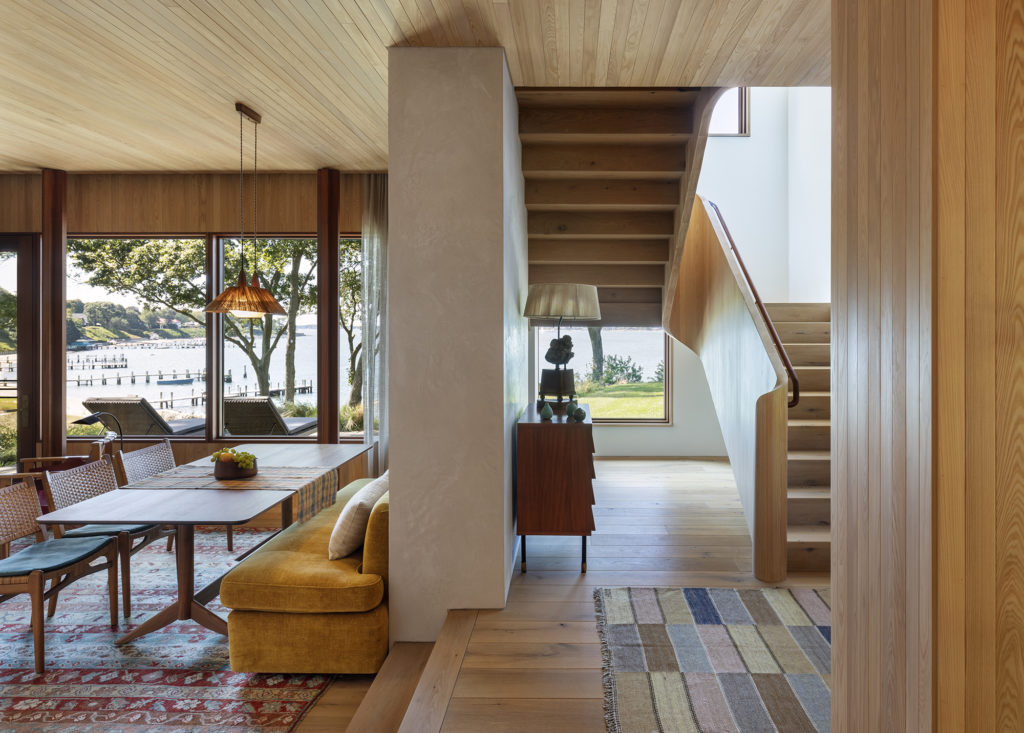
East End House, Location: East End Long Island NY, Photography: Albert Vecerka/Esto
What drove the selection of materials used in the project?
The project embraced a limited palette of long-lasting and low-maintenance materials such as red cedar, cypress, white oak, New York bluestone, Vermont marble, Virginia soapstone, and Sausalito, CA tile. The tactile experience of natural materials like wood and stone throughout the house provide further means of rooting the home’s users in the natural world, and were carefully chosen to be durable, hiding sand and other traces of the outdoors that would come in on bare feet. Much of the house’s interior and exterior was given “living” finishes that will age beautifully and gracefully, lasting many years with little or no maintenance. Natural, VOC-free oil finishes were applied on all interior and exterior wood in lieu of standard urethanes or varnishes.
What is your favorite detail in the project and why?
The sculptural stair. While the house espouses many details, they are rigid and linear. Inserting this curvilinear stair contrasts the otherwise rational and orthogonal geometry, and provides a soft transition to the upper level private spaces.
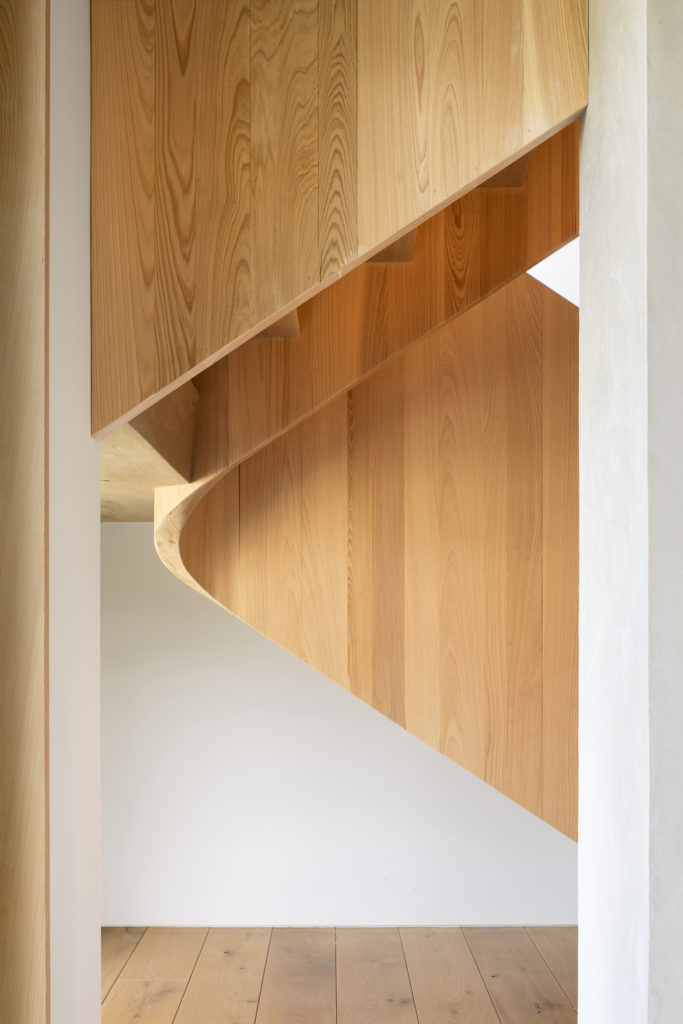
East End House, Location: East End Long Island NY, Photography: Albert Vecerka/Esto
How important was sustainability as a design criteria as you worked on this project?
One of the main design criteria was to create a long-lasting, high-performance home with minimal presence on its delicate site. The project incorporates sophisticated passive house strategies and construction methods including thick insulated framing, a continuously insulated envelope and energy-recovery ventilation, a continuous air barrier, carefully placed and high-performing operable windows and doors, and deep southern and western eaves to provide shading, all of which contributed to substantially reduced heating and cooling requirements. The size of the house was carefully considered with multiple independent climate zones to keep the footprint small and energy consumption low. Native species of plantings and a small lawn minimize irrigation. Local, sustainable, and natural materials were chosen not only for their beauty, but for their durability.
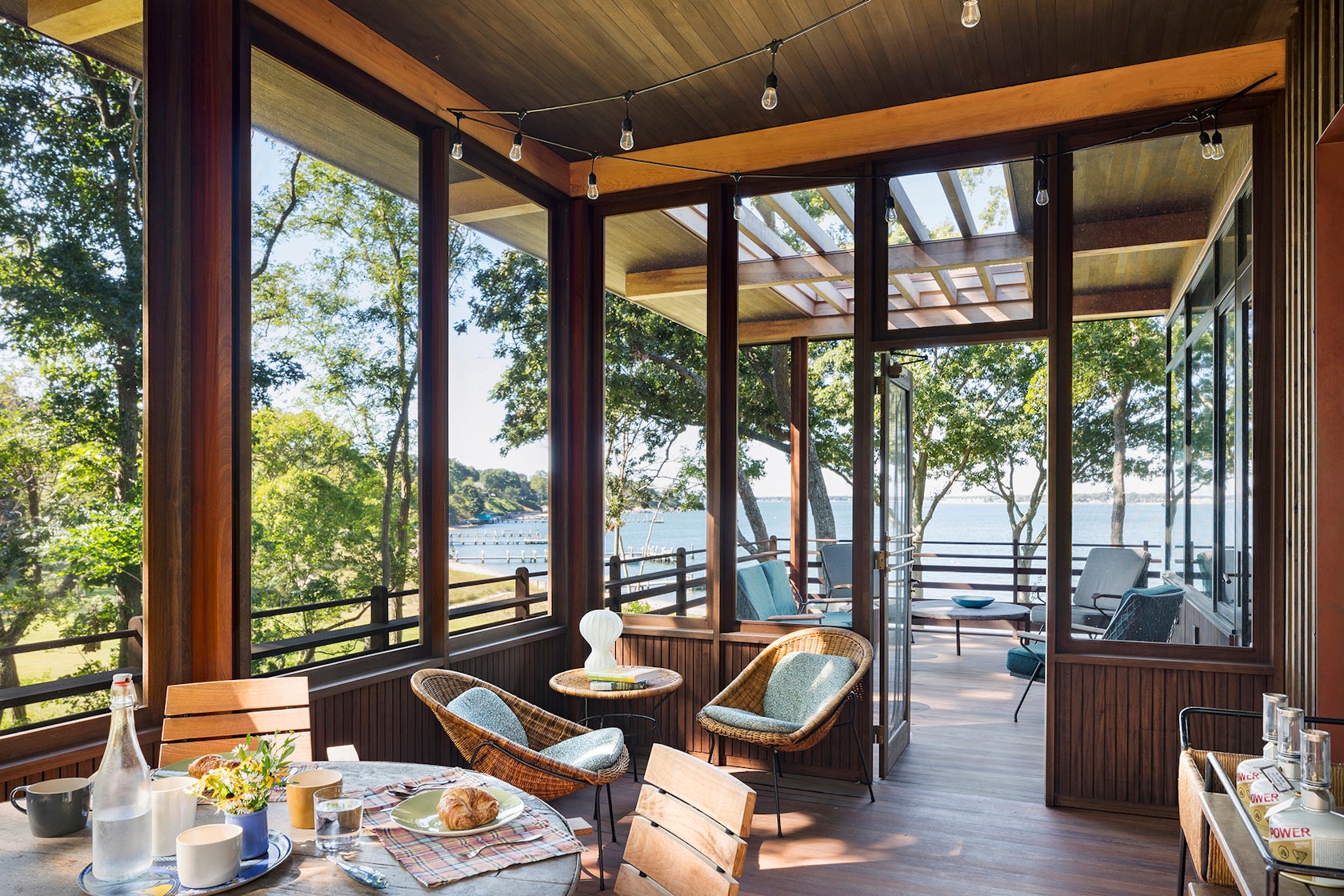
© Albert Vecerka/Esto
How have your clients responded to the finished project?
Conversations with the clients and visits to the house since it has been occupied have revealed how successful the project has been with regards to our goals of using biophilia to increase the occupants’ sense of connection to nature. The design of the house encourages and reminds the users to spend time outdoors, and in the colder seasons, it invites residents to sit by the fireplace or at one of many cozy nooks.
How do you believe this project represents you or your firm as a whole?
Guided by the concept of biophilia and its positive effects, the East End House exemplifies our belief in the importance of creating meaningful connections to the surrounding environment in our projects. This sustainably designed retreat also represents our commitment to minimize the environmental impact of buildings and to ensure efficient, cost-effective, long term construction requiring the least amount of maintenance. The house provides an alternative model of “luxury” that has a lower impact on the immediate and greater environment, is higher-performing and more energy-efficient, and is built for longevity rather than the current moment.
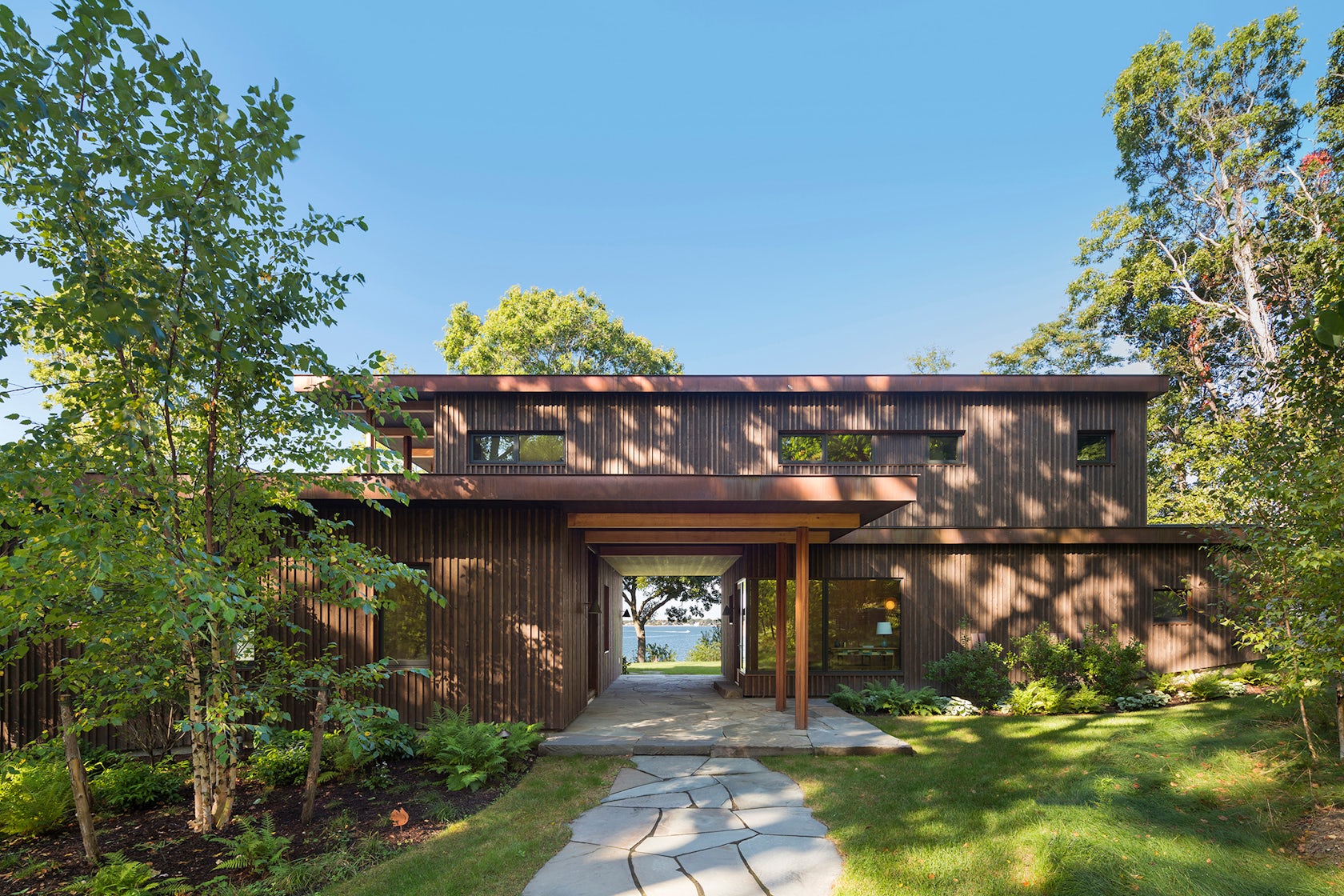
© Albert Vecerka/Esto
Is there anything else important you’d like to share about this project?
From a construction perspective, the house is more complex than it appears. In order to maximize the water views while minimizing its impact on the site, the house cantilevers over the edge of a hillside rather than compelling extensive regrading. This decision to maintain the softness of the grading down to the water while creating a dramatic floating outdoor area, required extensive steel framing, while the decision to express cantilevered or thin, floating roof planes, required steel beams as well as custom steel cruciform columns.
Further concealed are the 30’ deep foundations that became necessary after discovering that much of the leveled area of the hillside was filled from the 1950s. This meant that footings needed to be placed 30’ below the first floor in order to rest on stable soil (or in this case, compacted sand).
Credits / Team Members
Andrew Franz, AIA, LEED AP, Principal; Anne Mason Kemper, Project Manager
Robert Silman Associates – Structural Engineer; Zero Energy Design – Mechanical Engineer; Steven L. Maresca & Associates – Civil Engineer; Edmund Hollander Design – Landscape Architect; Precision Home Theater, LLC – AV Consultant; Saskas Surveying – Surveyor; F. Michael Hemmer, LS, PC – Surveyor; EN-Consultants – Environmental Consultant; Artisan Construction Associates, Inc. – General Contractor
Products / Materials
Exterior Siding: oiled western red cedar board and batten Roof: PVC flat roof with copper eaves and fascia Windows: Mahogany casement, awning, and fixed windows, painted on the exterior, clear at interior Chimney: Concrete masonry, clad in brick Exposed Structure: western red cedar beams, mahogany-clad steel cruciform columns Flooring: Oiled American white oak; New York bluestone tile, cement tile Wall and Ceiling Finishes: Solid cypress paneling, raw plaster, Heath Ceramics tile Cabinetry: Solid cypress

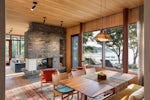
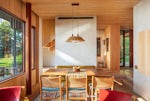
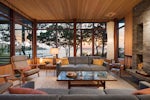
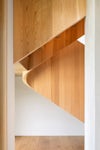
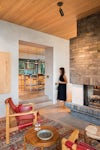
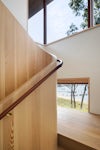
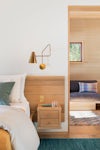
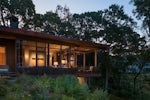





 East End House
East End House 


